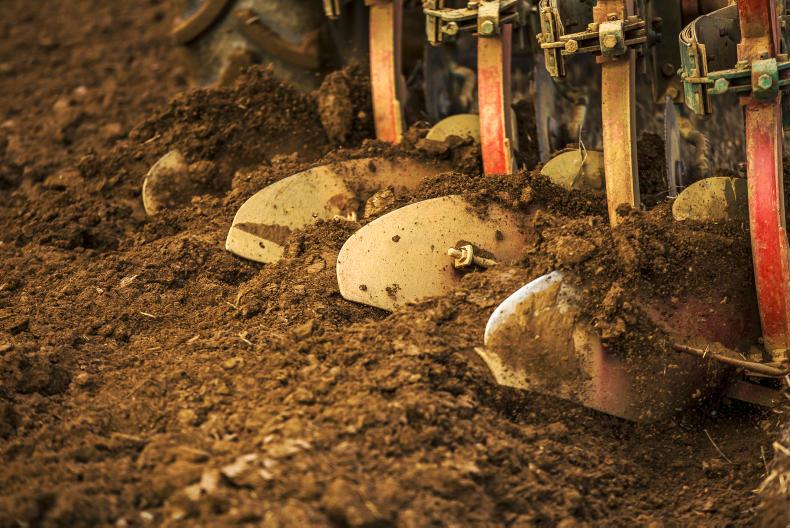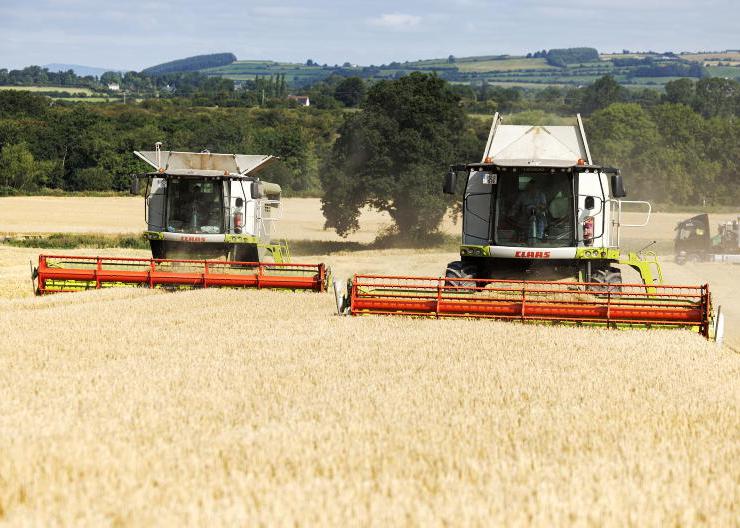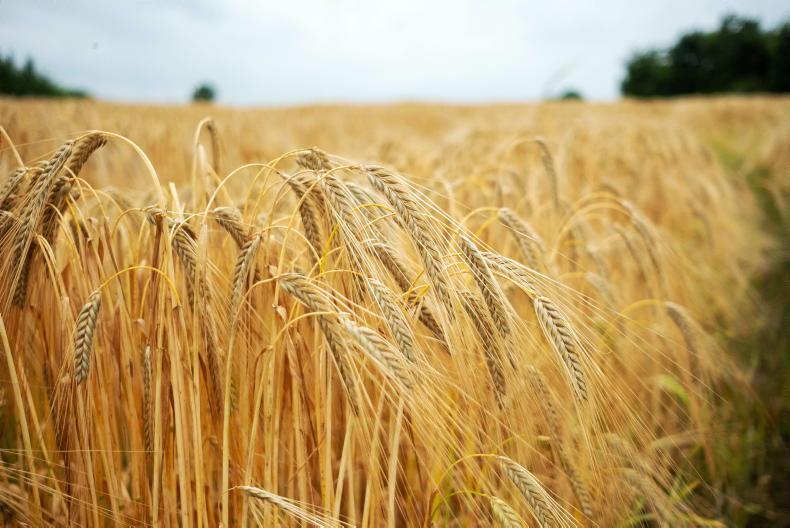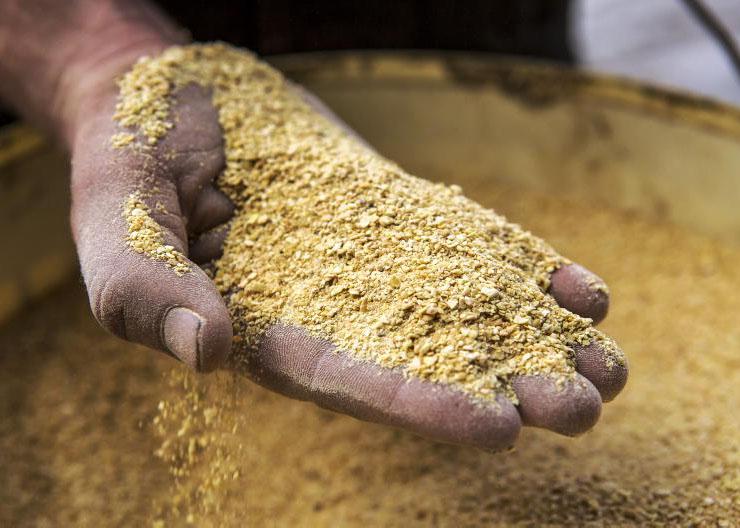Any conversation on cereal or crop areas in Ireland might be best set against the experiences of the past 170 years or so, when there was about 1m hectares of cereals in the country. This is shown by the CSO data in Figure 1, when in 1847 the major cereal was oats with over 600,000ha at the time. This fell on a relatively consistent basis up to about 1970 and has remained relatively flat since then.

Wheat and barley areas were only a small proportion of the total back then, but wheat area in 1847 was more than the total cereal area in 2019. Wheat and oat areas increased noticeably in the era of compulsory tillage during the second world war, but it settled back to remain relatively stable from the 1970s, when the winter crop became more dominant.
It is also of interest to note that total barley area was relatively insignificant up to about the 1950s when it began to increase, most likely in response to a growing livestock sector, to peak in 1980 at 366,000ha. Since then, the area has been sliding almost annually.
In 1996, the total cereal area was 298,000ha and by then barley was by far the biggest crop.
Total cereal area remained relatively similar up to about 2015, when area declined due to the expansion in the dairy sector. But by 2018 this was down to 261,000ha for all cereals. At this point, it is interesting to note that the CSO figures are sometimes higher than the BPS data but we must acknowledge that the CSO data is mainly from sample analysis, with a full census taking place only every 10 years.
2019 BPS applications
While the BPS numbers differ slightly, the past few years have shown the same trend of area decrease and so 2019 was of significant interest to those in the industry to see if the better prices of 2018, albeit with poor yields, had managed to halt the decline or even reverse the trend.
While these are only provisional figures, it does appear as though we have an increase in cereal area for 2019. The BPS figure for total cereals in 2019 is up over 3,600ha to 259,006ha.
However, the increased area claimed as cereals is not a direct increase in the total area in tillage. Most of the increase in cereal area has returned from beet and maize production last year, when it was grown to help with the fodder crisis.
The area sown to oilseed rape in 2019 is also down by 1,352ha at 9,065ha from 10,417 in 2018
This dedicated fodder crop area is down from 30,310ha in 2018 to 25,267ha in 2019. The area sown to other fodder crops, like kale and arable silage, is also down this year.
The area sown to oilseed rape in 2019 is also down by 1,352ha at 9,065ha from 10,417 in 2018. The bulk of this area reduction happened in the spring crop, which was down by over 1,140ha. No doubt the early spring which enabled land to be planted earlier with other crops was part of the reason for this swing.
The area sown to protein crops is down by 561ha to 7,870ha. The bean, pea and lupin areas together come to 7,861ha. If this turns out to be the final protein area for aid, the 2019 protein payment would be €38160/ha.
The 2019 figure is put at 16,616ha, down for the fifth year in a row to represent a slowing of tillage land going back into grass
The total area sown to potatoes is put at 8,095ha, up 225ha on last season, so largely similar to last year as far as the market is concerned.
The amount of land going back into grass from tillage, known as grass year 1, is also lower in 2019 than in 2018. The 2019 figure is put at 16,616ha, down for the fifth year in a row to represent a slowing of tillage land going back into grass.
The area sown to wild bird cover is back by roughly 1,500ha on the two preceding years.
The individual cereals
The makeup of the cereal area, as illustrated in Figures 2 and 3, shows that the recent area decline appears to have halted and that the main decrease happened in spring barley, albeit at the expense of an increase in winter barley area.

The provisional figures for 2019 show spring barley area down by almost 31,000ha to pass below 100,000ha for the first time since about the mid-1950s. But winter barley was up 24,101ha to record one of its highest areas ever at 80,531ha.
While the spring oat area is down in 2019, the winter area is up by over 6,000ha to 16,217ha, again one of the biggest areas in recent times and helped by the good planting conditions in autumn 2018.

Spring wheat area is low at 3,647ha. While this is broadly similar to last year, it is less than half the area sown in many of the normal preceding years.
Other cereals, such as triticale and rye, have come into production more in recent years and account for over 900ha in 2019 (Figure 3). Some of the rye is being grown for fodder but a bigger area this year is being grown for the distilling market. The triticale is mainly grown for animal feed.
Main points
The overall area sown to cereal crops is up 1.4% on last year.Area sown to fodder crops is down just over 11%.The area in grass year one seems to be decreasing since 2015.Oilseed rape and protein crops areas are both lower in 2019.
Any conversation on cereal or crop areas in Ireland might be best set against the experiences of the past 170 years or so, when there was about 1m hectares of cereals in the country. This is shown by the CSO data in Figure 1, when in 1847 the major cereal was oats with over 600,000ha at the time. This fell on a relatively consistent basis up to about 1970 and has remained relatively flat since then.

Wheat and barley areas were only a small proportion of the total back then, but wheat area in 1847 was more than the total cereal area in 2019. Wheat and oat areas increased noticeably in the era of compulsory tillage during the second world war, but it settled back to remain relatively stable from the 1970s, when the winter crop became more dominant.
It is also of interest to note that total barley area was relatively insignificant up to about the 1950s when it began to increase, most likely in response to a growing livestock sector, to peak in 1980 at 366,000ha. Since then, the area has been sliding almost annually.
In 1996, the total cereal area was 298,000ha and by then barley was by far the biggest crop.
Total cereal area remained relatively similar up to about 2015, when area declined due to the expansion in the dairy sector. But by 2018 this was down to 261,000ha for all cereals. At this point, it is interesting to note that the CSO figures are sometimes higher than the BPS data but we must acknowledge that the CSO data is mainly from sample analysis, with a full census taking place only every 10 years.
2019 BPS applications
While the BPS numbers differ slightly, the past few years have shown the same trend of area decrease and so 2019 was of significant interest to those in the industry to see if the better prices of 2018, albeit with poor yields, had managed to halt the decline or even reverse the trend.
While these are only provisional figures, it does appear as though we have an increase in cereal area for 2019. The BPS figure for total cereals in 2019 is up over 3,600ha to 259,006ha.
However, the increased area claimed as cereals is not a direct increase in the total area in tillage. Most of the increase in cereal area has returned from beet and maize production last year, when it was grown to help with the fodder crisis.
The area sown to oilseed rape in 2019 is also down by 1,352ha at 9,065ha from 10,417 in 2018
This dedicated fodder crop area is down from 30,310ha in 2018 to 25,267ha in 2019. The area sown to other fodder crops, like kale and arable silage, is also down this year.
The area sown to oilseed rape in 2019 is also down by 1,352ha at 9,065ha from 10,417 in 2018. The bulk of this area reduction happened in the spring crop, which was down by over 1,140ha. No doubt the early spring which enabled land to be planted earlier with other crops was part of the reason for this swing.
The area sown to protein crops is down by 561ha to 7,870ha. The bean, pea and lupin areas together come to 7,861ha. If this turns out to be the final protein area for aid, the 2019 protein payment would be €38160/ha.
The 2019 figure is put at 16,616ha, down for the fifth year in a row to represent a slowing of tillage land going back into grass
The total area sown to potatoes is put at 8,095ha, up 225ha on last season, so largely similar to last year as far as the market is concerned.
The amount of land going back into grass from tillage, known as grass year 1, is also lower in 2019 than in 2018. The 2019 figure is put at 16,616ha, down for the fifth year in a row to represent a slowing of tillage land going back into grass.
The area sown to wild bird cover is back by roughly 1,500ha on the two preceding years.
The individual cereals
The makeup of the cereal area, as illustrated in Figures 2 and 3, shows that the recent area decline appears to have halted and that the main decrease happened in spring barley, albeit at the expense of an increase in winter barley area.

The provisional figures for 2019 show spring barley area down by almost 31,000ha to pass below 100,000ha for the first time since about the mid-1950s. But winter barley was up 24,101ha to record one of its highest areas ever at 80,531ha.
While the spring oat area is down in 2019, the winter area is up by over 6,000ha to 16,217ha, again one of the biggest areas in recent times and helped by the good planting conditions in autumn 2018.

Spring wheat area is low at 3,647ha. While this is broadly similar to last year, it is less than half the area sown in many of the normal preceding years.
Other cereals, such as triticale and rye, have come into production more in recent years and account for over 900ha in 2019 (Figure 3). Some of the rye is being grown for fodder but a bigger area this year is being grown for the distilling market. The triticale is mainly grown for animal feed.
Main points
The overall area sown to cereal crops is up 1.4% on last year.Area sown to fodder crops is down just over 11%.The area in grass year one seems to be decreasing since 2015.Oilseed rape and protein crops areas are both lower in 2019. 












SHARING OPTIONS